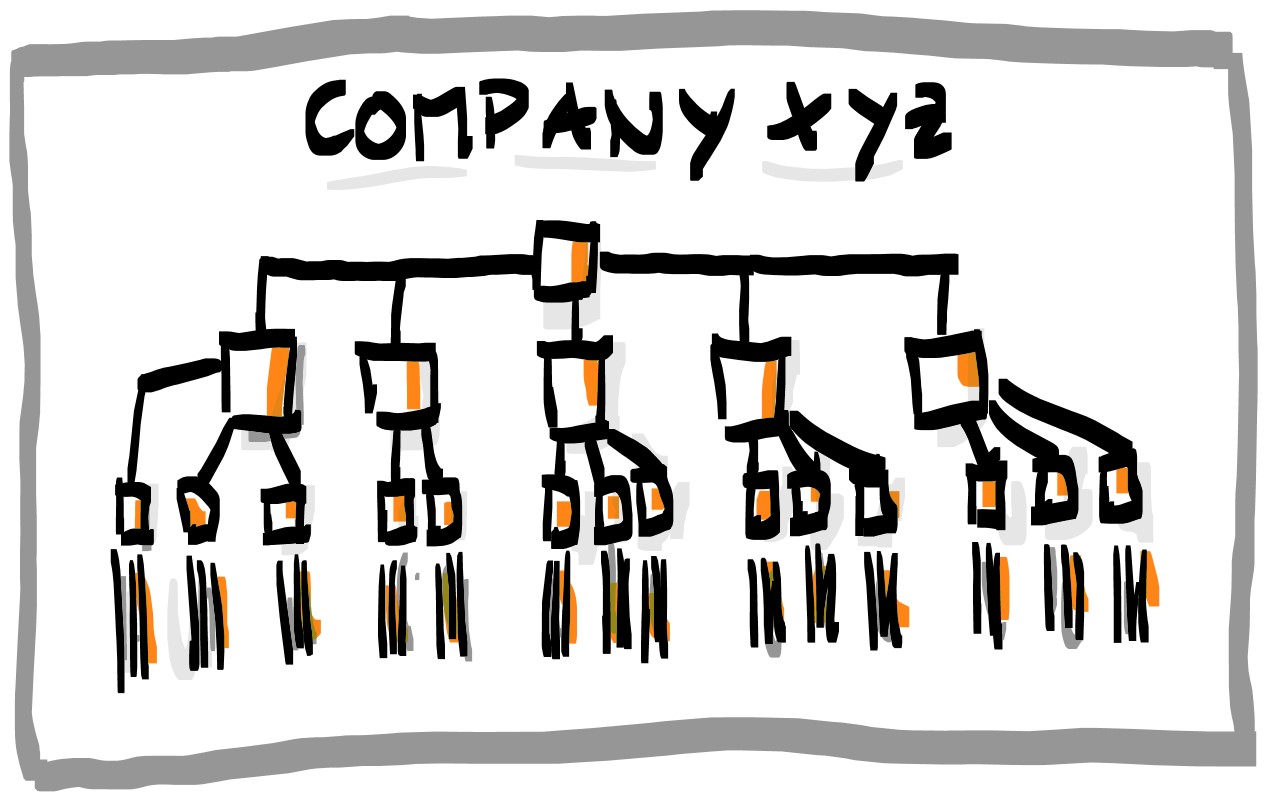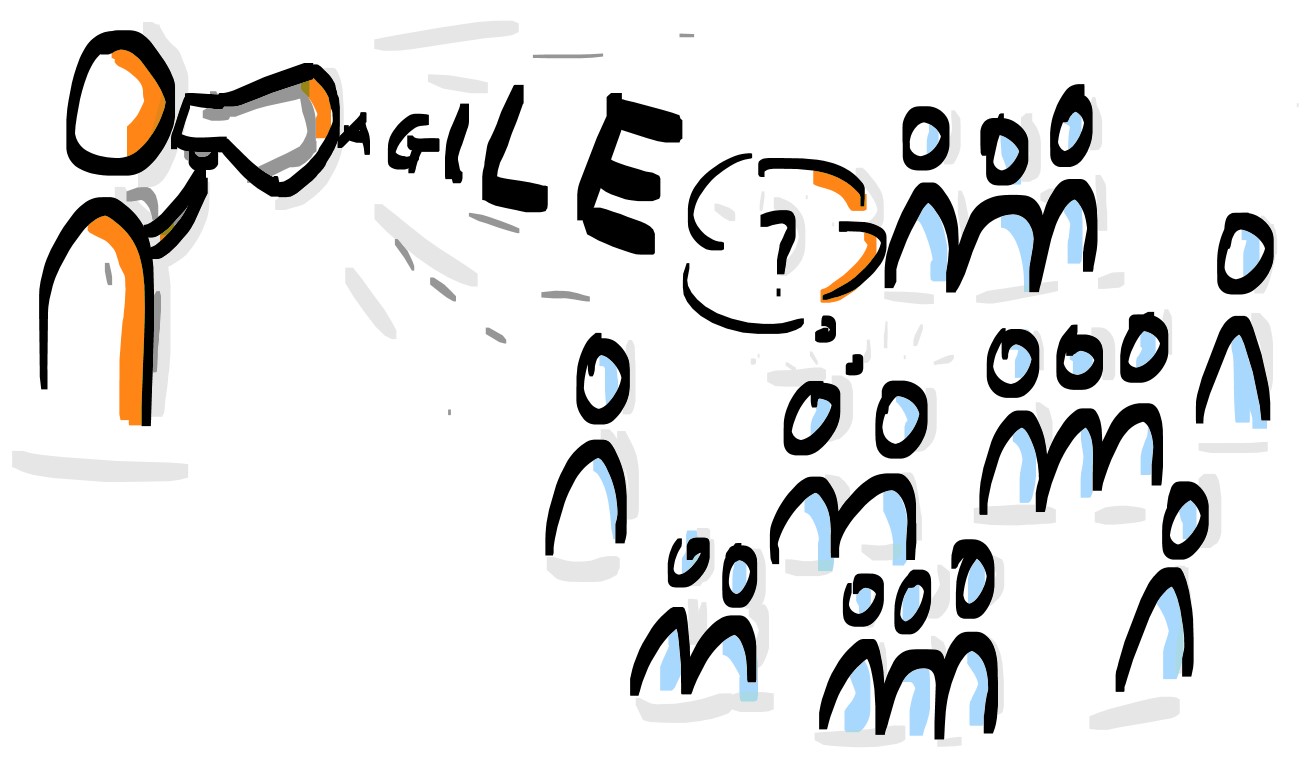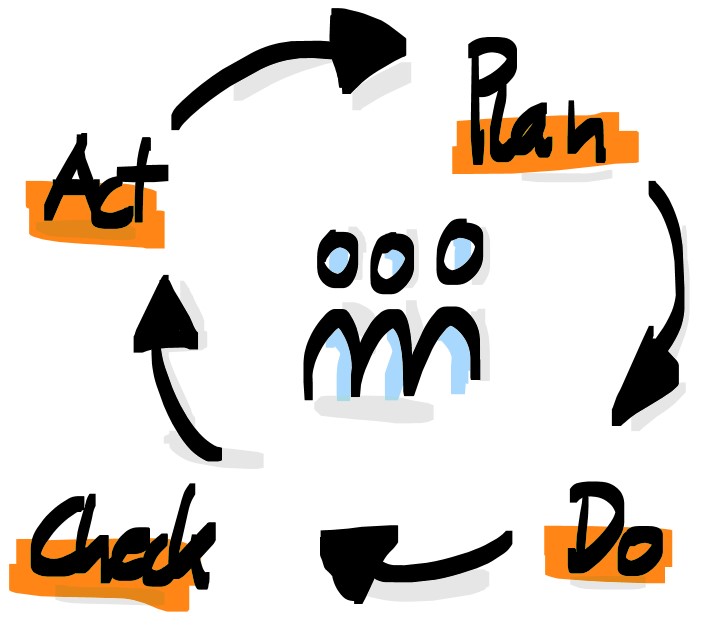You want to work agile or more agile? You yourself are thinking about trying a little something in that direction? Now you have a couple of questions? You are not alone. I, for instance, have recently been asked:
What are the most important requirements for working Agile?

At least the smart people who are open to change always ask themselves if the preconditions for the change are in place. In the case of Agile, this question is particularly pressing to smart people (i.e., everyone) because they immediately notice ( naturally) that Agile means self-organization. And THAT IS SO DIFFERENT from the obsessive Command-And-Control culture we are currently working in! Therefor…
The most important prerequisite for agile working…
…is the realization that there is no other way than Agile anymore.
Who does not have this insight, will stick to the previous way of doing things. After all, we all usually only do things that seem (personally) meaningful to us.
In order to initiate more agile work in the team or the entire company, experience has shown that it is VERY important to give everyone VALUABLE opportunities to address the issue:
- What is Agile actually
- Why Agile at all
- Why does Agile proceed the way it just does, and most importantly:
- What does that mean for my own everyday work and what do I get out of it
Note on the side: To answer these questions different people need different amounts of time.
How management behaves…
…is one of the most decisive factors here. Why? If they do not exemplify agile working, i.e. if they behave as they always have, this sends a subtle but clear signal to everyone else: everything should stay the same. That’s just how we pack animals tick.

That’s why it the best thing to do…
… ist that first and BEFORE EVERYONE ELSE (!!!) the leadership circle is aware of Agile forms of collaboration, instead of just delegating or pushing the change. At the very least, it is done together and simultaneously with everyone else.
For managers should of course first understand why agile change is necessary and what it stands to gain. And also: what that means in the final analysis, namely:
- working at eye level,
- the hierarchy pyramid tilted,
- reduced co-dependencies and thus fewer opportunities for manipulation in secret,
- Dismantling of obstructive and costly power and status structures, etc.
And, yes: executives should be involved upfront even if that could blow off agile change before it gets started. Because that’s the ONLY CHANCE to minimize annoying guerrilla fighting from opponents of agile change at a later date. ( Battles will still happen, but just not as many and with not as many casualties).

Ideally…
…THAT would be the best way. However, this path is chosen less often than one would think. Meaning: Of course, the ” Agile marching orders” are often first issued without being understood: “You go Agile, with us in management nothing changes. Oh, and by the way, if you don’t get Agile fast, you’re going to get kicked out soon.”
Of course, doing so is – well – less than ideal. In fact, it’s disastrous. However, underlying this is seldom bad intention, but rather the contrary. The command is precisely what has been the task and nature of (Tayloristic) management up to now. As a result, organizations and also managers within these organizations hardly know more than this means to get things moving.
 First and foremost, Agile means…
First and foremost, Agile means…
… Running experiments (PDCA circles). In Agile change, the first experiment is often to use command-and-control manners, the mistrust-ridden methods of the past, to accomplish Agile change.
This cannot work at all. Because: Agile means self-organization, so: trust instead of mistrust (pull vs. push).But most people rarely know this BEFORE the change, though many suspect it. Therefore, exactly THAT is the first learning, the important experience, from which they learn a lot:… Running experiments (PDCA circles). In Agile change, the first experiment is often to use command-and-control manners, the mistrust-ridden methods of the past, to accomplish Agile change.
This cannot work at all. Because: Agile means self-organization, so: trust instead of mistrust (pull vs. push).But most people rarely know this BEFORE the change, though many suspect it. Therefore, exactly THAT is the first learning, the important experience, from which they learn a lot. Ordering is the opposite of Agile.
Who would dare to…
… take on this sometimes even very uncomfortable learning experience?
Well, people who know and are convinced that it is worth it.That things need to change in our organizations.
Told you.
Still not convinced?
- Emiliani, Bob: The Triumph of Classical Management Over Lean Management. How Tradition Prevails and what to Do about it.
- Kotter, John P.: Accelerate. Building Strategic Agility for a Faster-Moving World.
- Laloux, Frederic: Reinventing Organizations
- Mazzucato, Mariana: The Value of Everything: Making and Taking in the Global Economy
- Mezick, Daniel J.; Pontes, Deborah; Shinsato, Harold: The Open Space Agility Handbook
- Rigby, Darrell K.; Sutherland, Jeff; Takeuchi, Hirotaka: Embracing Agile. Harvard Business Review
- Schwaber, Ken; Sutherland, Jeff: Scrum Guide
- Sutherland, Jeff: Scrum. The Art of Doing Twice the Work in Half the Time
